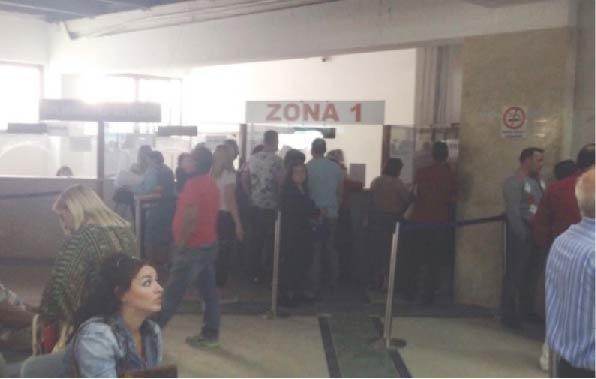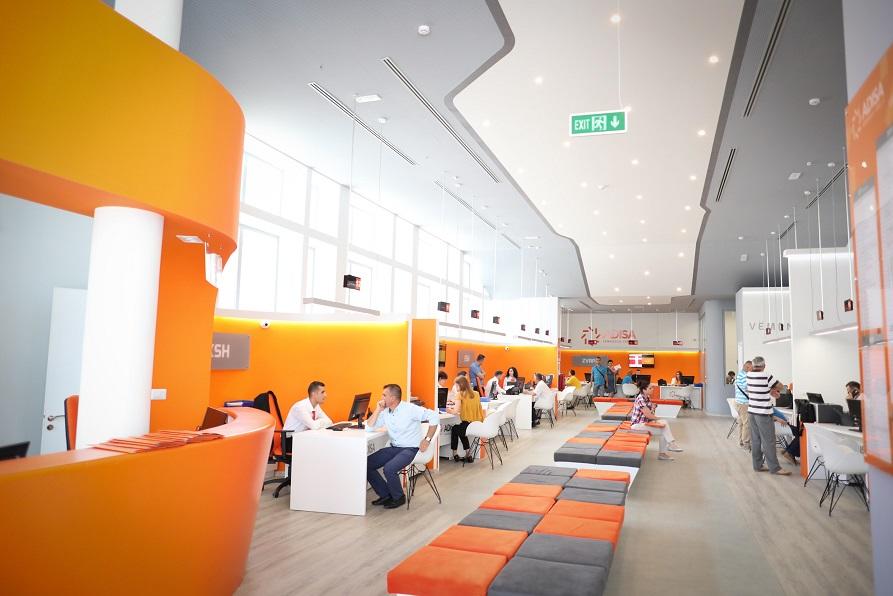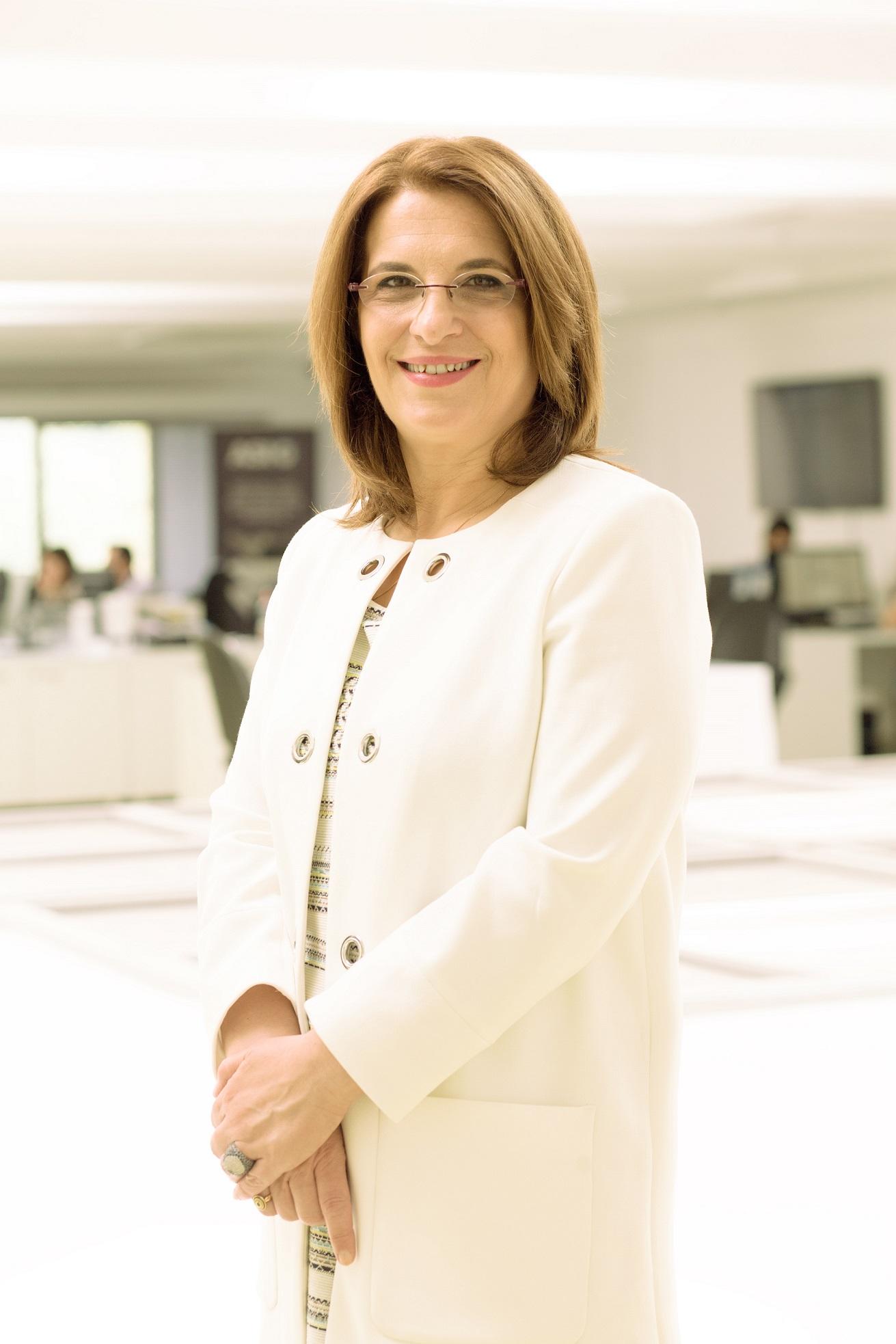An Interview with Dr. Milena Harito, Minister of Innovation and Public Administration of Albania
If you were a citizen of the Republic of Albania in need of a moderately complex public service in 2014, you were almost certain to enter a maze of public bureaucracy: dark and messy offices, long lines, vague instructions and procedures, and little opportunity for citizen feedback or tolerance for criticism. It’s no wonder that the uncertainty around these services forced most citizens to use their social and family connections, and in some cases, bribes, to ensure speedy and secure service delivery.
In 2014, on direction from the Prime Minister’s Office (PMO), the Minister for Innovation and Public Administration (MIPA) started a process of reinventing the way the public administration delivers service to its citizens. The objective was to create an administration that revolves around the needs of the citizens – a citizen-centric service. While the objective was clear, the path there was far from known. The view that the government could simply adopt a successful reform from a similar country was quickly abandoned, as the people at the forefront of the reform realized that Albania faced Albania-specific challenges.
Three years down the road, over 400 services (out of 1,400) offered by 10 public institutions in five municipalities and covering 60 percent of the total service volume to citizens and businesses have become a part of the reform. The processes behind each service were analyzed and reengineered and MIPA established the Agency for the Delivery of Integrated Services (ADISA). ADISA develops and ensures service standards, offers public services through one-stop-shop offices and monitors the performance of public sector service providers. The reform, among other things:
- Replaced old routines for standard transparent multi-chanel information and communications technology solutions;
- Established one-stop-shop offices which streamline citizen interaction;
- Trained professional front office personnel to respond in a customer-friendly manner;
- Holds the front office personnel accountable for ensuring timely and proper back office delivery;
- Eliminated redundant bureaucratic steps and incentives for corruption;
- Continuously monitors the service delivery and seeks feedback from its users.
The reform’s timing and success happened as a result of complex coordinated and innovative government initiative. We interviewed Dr. Milena Harito, Minister for Innovation and Public Administration and a frontrunner of the reform, in order to learn what it took to advance this agenda.

 Photos: Registering property in Tirana, before and after. Source: ADISA
Photos: Registering property in Tirana, before and after. Source: ADISA
Center for International Development: Dear Minister, how did the initiative for this reform come about?
Dr. Milena Harito: The Reform of Public Services was one of the six government priorities under Prime Minister Edi Rama back in 2013, when this government stepped in. As a Minister of Public Administration, I was asked to lead the reform. Initially, it was envisioned as a process of service digitalization, but soon in the process we found out that the reform had to be much more than that if we were about to address the key problems we identified with respect to public service delivery.
CID: What are the main problems that this reform is addressing?
MH: There are several. Lack of transparency – citizens were never certain about the documentation they will be asked to present when requesting a service, nor did they know what to expect in terms of procedures. Lack of predictability – there was no guarantee that if one would request the same service twice, one would obtain the same result. Citizens were at the mercy of civil servants’ goodwill. Lack of accountability – timely service delivery was the exception rather than the norm. Civil servants were not penalized for violations, denial of service or delays. Bribes were common, too. Service standards were absent – citizens were missing a basic sense of what constitutes a public service. Some offices even lacked a service window which would signal that they are providing a public service. All this formed a culture of administrative prerogative and arrogance with little regard for customer needs.
CID: With so many issues to address, where did you start?
MH: The complexity of the task was quite terrifying. We first needed to learn the essential facts. We started by conducting an inventory of all public services and found that often the institutions providing them were not aware of all the services they provide. We surveyed around 1,400 services. Next step was to measure the frequency by which citizens use each service and decide which of them should become reform priorities. Then we turned to deciding on service standards. What does a good service look like? This part was developed following the French service model, with technical assistance from the EU. At this point we had to solve a problem that didn’t have a clear solution. The 400 focal services were distributed across 10 government agencies, each of which had different work routines and responded to different line ministries. How do we ensure adoption and longevity of the new ways of delivering a service across numerous entities? The game changer was the idea to create ADISA, an agency with two main objectives, the separation of the front office from the back offices and the creation and application of customer care standards. After establishing its legal basis, ADISA started the implementation of one-stop-shop offices, initially with the property office of Tirana, one of the busiest and notoriously corrupt agencies.
CID: In the USA in the 1990s, Bill Clinton launched a reform called “Reinventing Government.” As part of this process, lots of government services were consolidated and many went online. The government employment at the end of the Clinton Administration was a quarter less at its beginning. Is this reform of similar scale and does it have similar consequences?
MH: The situation in Albania is very different. Albania’s administration is very small – 90,000 people are providing service to about three million citizens. This is low administration to people ratio for regional standards. We didn’t suffer from having a large government, but from having an inefficient one. In most cases, the government agencies did not have front office employees for their services. Hence, instead of laying off workers, we hired new staff for ADISA. We focused heavily on their training, work ethic and service orientation.
CID: What is your vision of the public administration in Albania after completing this reform? How will the public administration differ then compared to its state in 2014?
MH: We probably need another two to three years to complete the reform in all Albanian municipalities. At the end of the reform, the public sector service will resemble the one of the private sector – think of modern banking or telecom services. The beauty of the front and back office separation is that by professionalizing the front office, we created a pressure on the back office to professionalize, too.
CID: What are some of the tangible benefits of this reform that the citizens of Albania are already experiencing today?
MH: One is the standardized application forms for services. This is not only important for equal treatment of the users, but also all involved government agencies receive an identical set of information about the service request. Another one is the call center with a centralized number for all public services 11-800, where citizens can obtain standard information about available services, the same on the e-albania portal. Moreover, the one-stop-shop offices allow citizens to apply for several services that are performed different government agencies at a single location.
CID: One of our observations when it comes to the public administration in Albania is that many departments have weak or inadequate knowledge about their job tasks and responsibilities. And yet, you managed to find the capable people to design and implement this very ambitious reform. Who provided the expertise and the examples for this reform?
MH: It was a mix of local ideas and ideas from other places. We started by visiting various countries that could provide good examples, such as Georgia and Azerbaijan, both of which have undergone public service delivery reforms. We borrowed the idea of a one-stop-shop and the knowhow about how to locate them and how to create user friendly space from Georgia. Back in Albania, we created a group of five local people in key administrative positions, who were knowledgeable about our public administration and were very dedicated to this reform. This group reviewed literature, models, and brainstormed about reform ideas. We started implementing the ideas, while still shaping them up. It was during this implementation process that we received support from international partners like the EU Commission and the World Bank. We borrowed the idea of customer care standards from private sector services.
CID: Although the reform borrows from experiences in other countries, it is unique and customized to the needs of the Albanian citizens. How difficult was it to strike the right balance between borrowing foreign ideas and responding to domestic idiosyncrasies?
MH: The idea of a front and back office separation is a local innovation. We added this to the one-stop-shop offices because we were solving a somewhat different problem than Georgia was at the time they started their reform. In Georgia, the reform started with one institution – the Ministry of Justice. Hence, there was no need of front and back office separation. Similar was the case with private companies which are a single entity, and not 20 institutions as it was our case. Moreover, the currently available digital solutions are more efficient than the ones available when Georgia started their reform ten years ago. We knew, for instance, that it is possible for the service clerks to access integrated databases of several organizations and hence we adjusted the approach to benefit from such technological solutions.
CID: What is your favorite innovation?
MH: From the citizens’ perspective, the most important innovation is the one-stop-shop. From the perspective of the administration, it is the separation of the front and the back office.
CID: What were the main challenges in translating the vision of the reform into actual implementation?
MH: The first challenge was to understand what is feasible, how great our ambitions should be, and what timelines we should work with. The second was finding the right set of partners in the government. We needed partners in the administration in order to make sure that the reform is being understood and accepted, but too many partners would have made the project coordination difficult. We also faced resistance for a number of reasons. Some simply feared to lose the power, the privileges or the income from bribes. Other insisted that we only focus on creating online services. Having a background in ICT, I knew that problems stemming from organizational dysfunction cannot be simply solved by transitioning to an online system. Moreover, only 60 percent of Albanian have today online access, and the digital litteracy for complex services is of course still an issue.
CID: Digitalization, automation and centralization of services are some of the main features of the reform. Were the jobs of some civil servants affected by these processes and if yes, how?
MH: The small initial size of the administration and the fact that our administration is relatively young and trained in using computer interface, makes the transition far less disruptive than in countries that implemented digital technologies in the 1990s. I’m not aware of a significant negative impact on the employees. We tend to make the administration more efficient through information technology.
CID: What is the permanent imprint of this reform that will ensure that the reform will outlive changes of government in Albania?
MH: The reform has been very well accepted among the citizens. From the opening of the first one-stop-shop in October 2015, the positive response was immediate. Worsening the level of service that citizens are experiencing through this reform would be politically very costly. I think that this is a major reason why future governments will be interested in sustaining the changes.
About Minister Milena Harito
 Since September 2013, Dr. Milena Harito is the Minister of State for Innovation and Public Administration of the Republic of Albania. She has an extensive experience in the field of telecommunications and innovation.
Since September 2013, Dr. Milena Harito is the Minister of State for Innovation and Public Administration of the Republic of Albania. She has an extensive experience in the field of telecommunications and innovation.
Dr. Harito graduated with honours in Computer Science from the University of Tirana in 1989 and earned a Ph.D. from Paris VI University in 1997. Dr. Harito has substantial work experience as a senior manager in the telecommunications having worked during 15 years for Orange France, in Paris. She has been elected member of the Albanian Parliament in June 2013. Since she has been appointed State Minister for Innovation and Public Administration in September 2013, Dr. Harito has led important reforms for Albania in the process of European Union Integration: modernization of public administration through professionalization of civil service and extensive development of e-government, simplification of the relations with the citizens and improvement of public services delivery based on customer care principles.
RELATED CONTENT: Case Study: Delivering Customer Care and Cutting Corruption in Public Services